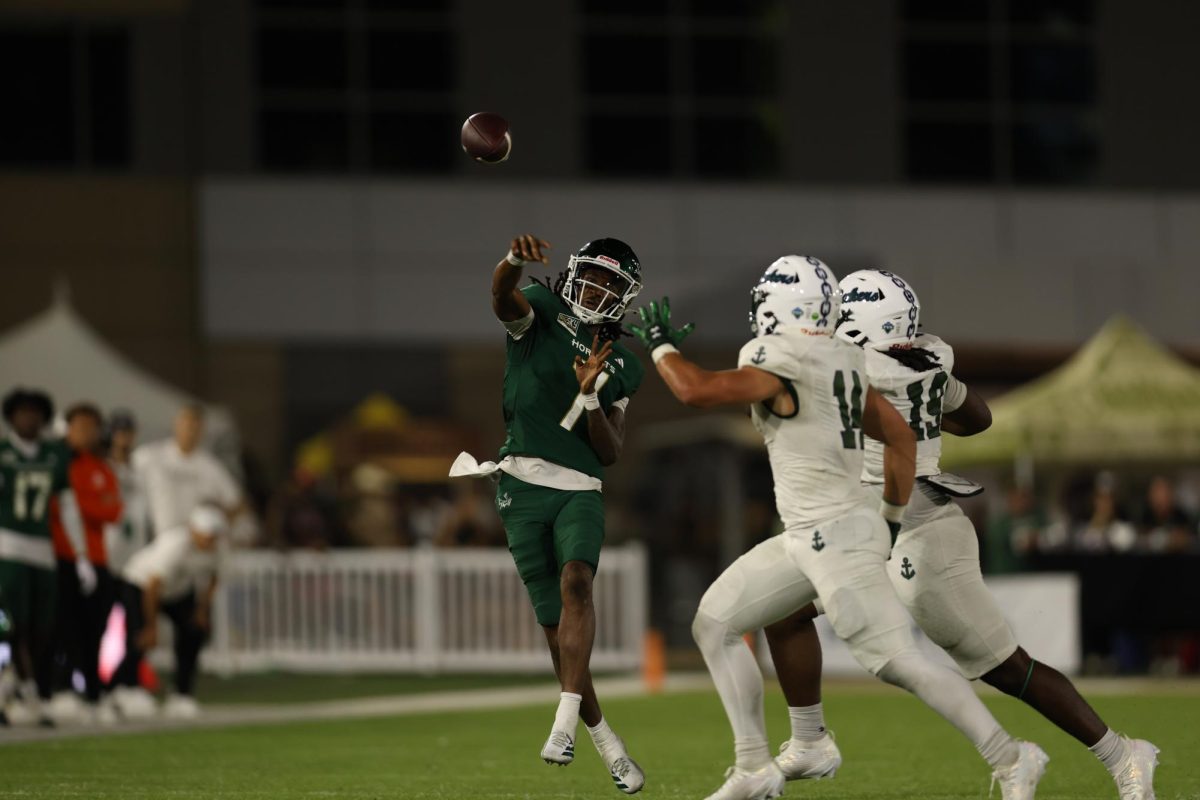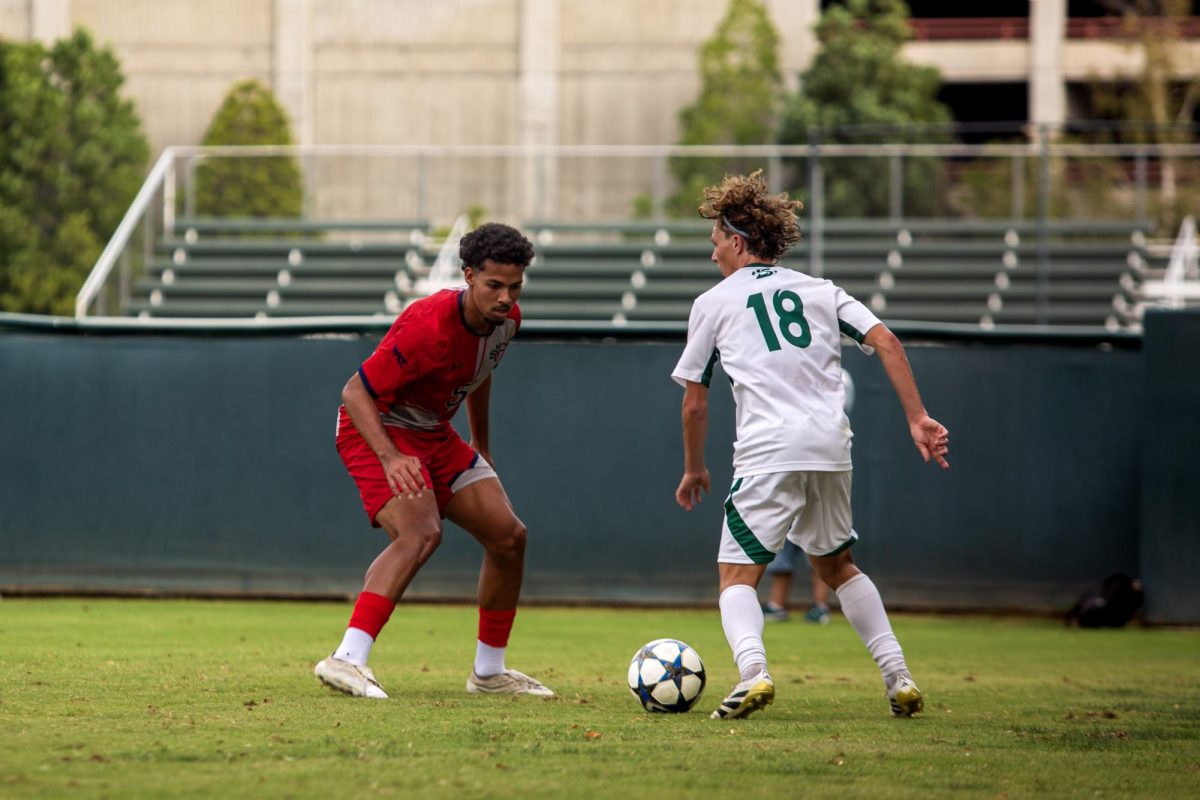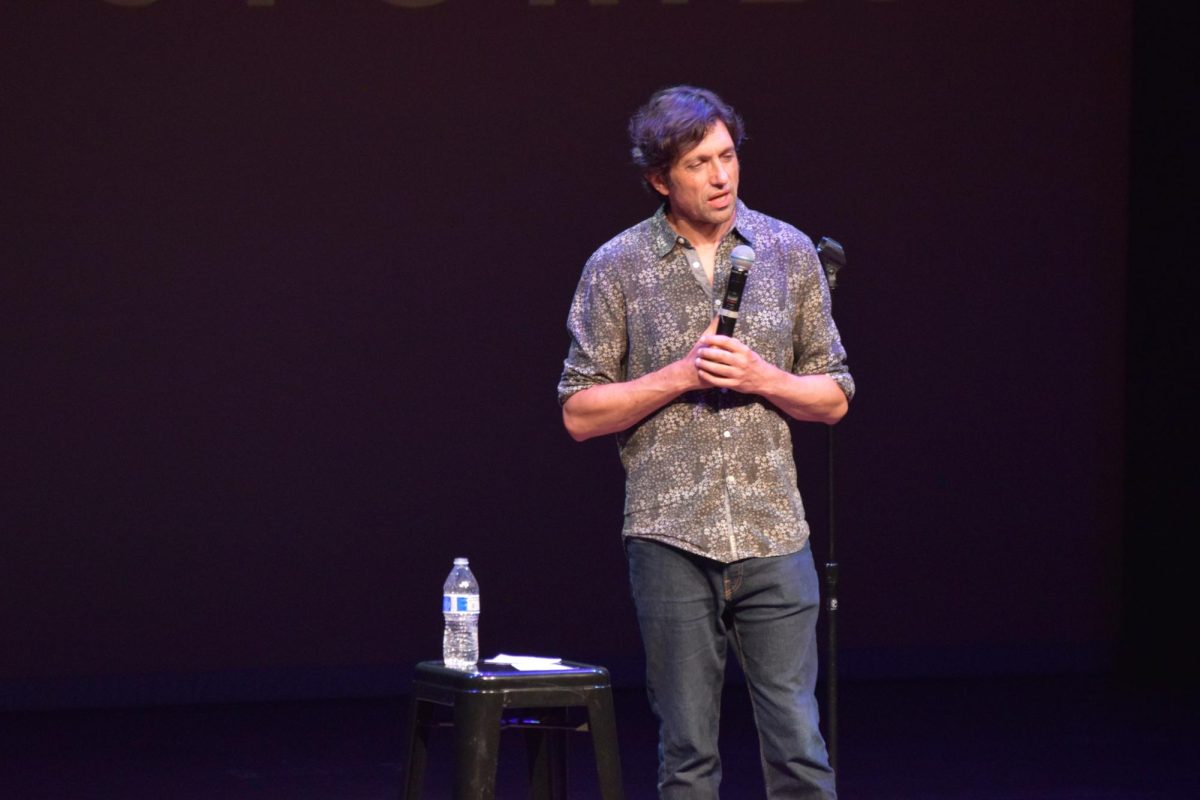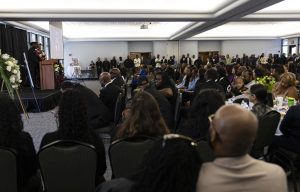Trainers essential for success
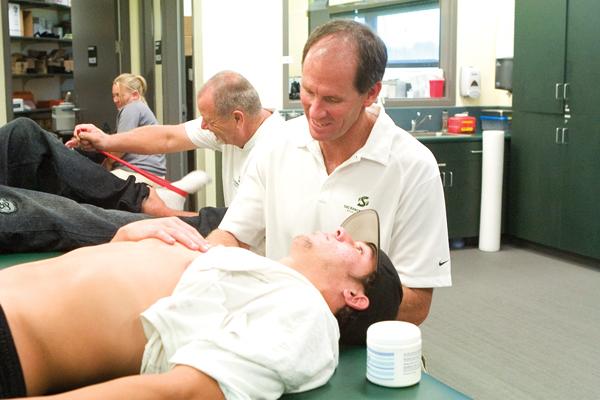
The State Hornet
Athletic trainer, Steve DeHart, helps Sophomore Football player Brett Willis, soothe his shoulder:
October 24, 2008
One of the fastest-growing career fields, and potentially the most rewarding, is athletic training. It is an excellent option for former athletes and sport enthusiasts to get involved with a sports team after their playing days.
There is a major difference between an athletic trainer and a personal trainer. Personal trainers do not need anything higher than a high school diploma for their practice. Daily duties consist of assessing fitness needs and developing a fitness regimen for clients. Personal trainers are typically found in gyms.
An athletic trainer must have a bachelor’s degree and pass a comprehensive exam prior to earning an ATC credential. Daily duties involve providing physical medicine and developing rehabilitation programs for injured athletes. Another important task is injury prevention programs for athletes. Athletic trainers tend to work on a sports team at all levels of competition from high school to professional or at health care centers.
“Athletic trainers are on the sidelines during the games,” associate athletic director Lois Mattice said. “They are the first line of care and evaluate the injury immediately.”
Athletic trainers are also known as rehabilitation specialists in the business world. With a growth of jobs in both traditional and non-traditional areas, athletic training is becoming a very popular career field among former athletes.
Sacramento State student Michael Boutros, a kinesiology major, is a former soccer player who aspires to become an athletic trainer for a professional sports team. Boutros also coaches JV soccer at Rio Americano High School.
Boutros admits that his playing career is over, but he would still like to be involved in sports in his future.
“I would love to work for a pro sports team,” Boutros said. “I want to be around the players and that type of atmosphere.”
Boutros is also interested in becoming an athletic trainer to learn more about sports injuries, which helps him and his coaching job.
“I have had many sports-related injuries and plenty of rehab,” Boutros said. “So when my players get hurt, I know exactly what to do and how to help them.”
Like Boutros, many former athletes are attracted to a possible career as an athletic trainer. It allows them to be involved with a sport they love.
It could be argued that athletic trainers are one of the most unrecognized components of any sports team. Mattice said that , whether the team is at the high school, collegiate or professional level, athletic trainers are a critical variable in the formula for a successful sports team.
“We are the problem solvers of the team,” Mattice said.
Matice, who has more than 20 years of athletic training experience, said an athletic trainer can form a special type of relationship and bond with a team, particularly with the players.
“There is a sense of trust between a player and athletic trainer,” said Mattice. “It is also common for a player to come to the athletic trainer for help first.”
An athletic trainer can make the difference between a broken and battered team and a healthy and active team. Whether it’s a well-developed rehabilitation program or simply preventing injuries, players and coaches depend on these professionals for success.
“Sometimes I feel like the bad guy,” athletic trainer Heather Farwig said in reference to telling coaches of a badly-injured player.
Mattice adds that it can be a love-hate relationship between a coach and trainer, especially when a trainer decides it’s in the player’s best interest to not play.
“The (coaches) don’t always like to hear what we have to say,” Mattice said.
Despite the hard decisions regarding a player’s injury, Mattice does believe that the relationships made with teams have created strong bonds.
“It sticks with you,” Mattice said. “You will always remember the relationships you developed.”
Athletic trainers get to develop those great relationships and bonds when they travel with the teams to games on the road. Some of them go through experiences during those endeavors that can only happen to them once in a lifetime. These kinds of hands-on experiences that athletic trainers go through are one of the many reasons that people decide to go into this field since for many of these trainers, this can be the closest they will get to working with a potentially great athlete.
Farwig also adds that as an athletic trainer, the learning never stops.
“You are constantly dealing with new types of injuries,” Farwig said. “Every injury is different so you will learn something new each day.”
Ronnie Nurss can be reached at [email protected]

















































